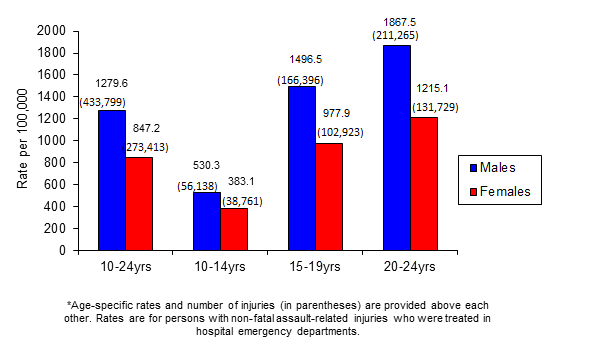Teen fighting may harm IQ
Blows to the head may explain these effects on the brain

Teen fighting is common and often occurs on school grounds. Such violence has now been linked to drops in some victims' IQ — likely from head injuries.
P_Wei/iStockphoto
By Janet Raloff
It’s not a topic many people want to talk about, but youth violence is common. “No community — affluent, poor, urban, suburban or rural — is immune from the devastating effects of youth violence,” notes the U.S. Centers for Disease Control and Prevention. It reports that each year U.S. emergency rooms treat more than 692,000 people between the ages of 10 and 24 for injuries from violent assaults. A new study now concludes that some of those injuries — ones due to teen fighting — can cause a type of harm that no hospital can cure: a lowered IQ.
Although boys sustain more fighting-related injuries each year, girls appear more vulnerable to an IQ drop from fighting. That’s one of the new findings being reported by Joseph Schwartz and Kevin Beaver. As criminologists at Florida State University in Tallahassee, they study issues related to crime.
For their new study, the pair has just analyzed data from the long-running National Longitudinal Study of Adolescent Health. Between 1994 and 2002, it collected information about 20,000 U.S. adolescents and young adults. Funded by the U.S. government, this study asked questions about health and behavior. It started when the participants were in middle- and high school. Most were followed for eight years, until some were as old as 25. On several occasions, the boys and girls took an IQ test. They also were asked, at that time, if they had been hurt badly enough in a fight, during the past year, to need treatment from a doctor.
During the study, at least 1 in 10 males and nearly 1 in 20 females reported being the victim of such serious violence at least once. Some participants reported many such injuries. Levels of violence among U.S. teens have been falling in recent decades. Still, current rates “remain staggeringly high,” Beaver told Science News for Kids.
He and Schwartz compared IQ scores for the study participants over time. And those IQ scores dropped among people who had reported being victims of serious fighting-related injuries. The pair’s findings will be published soon in the Journal of Adolescent Health.
On average, each serious injury from fighting was linked to a drop of not quite 2 IQ points, they found. But the drop differed by gender. Among boys, each injury logged during the study was linked to a drop of 1.62 IQ points. Girls experienced a drop almost twice that for each serious fighting-related injury that they reported. The girls’ higher vulnerability may reflect their bodies having less protection from injury, Beaver and Schwartz say.
How big a deal is a 2-point drop in IQ? “That’s a good question,” Beaver says. “If I took away one of your IQ points, would you be the same person? Yeah. If I took away four, would you? Probably. But if I took away six or eight?” Now, he says, that change could well be big enough to show an obvious difference in an individual’s cognition. (That’s the ability to think and reason.) And in the new study, participants who reported having sustained 10 or more serious injuries from fighting tended to experience a roughly 19-point drop in IQ over an 8-year span.
While IQ can affect a student’s grades, Beaver points out that adolescent IQ also predicts “a wide range of things that most people care about.” He says that “it predicts whether you’ll go to college, whether you will graduate with a high grade-point average, what your salary will likely be in adulthood — even whether you’ll come in contact with the criminal justice system [and be arrested].” It doesn’t predict these things with certainty, he says, but it does offer a good gauge.
Which injuries most harmful to IQ?
The data used by the Florida State team did not log the particular type of serious injury that each victim sustained. Some might have broken bones, bruised ribs or received cuts that needed stitching up. But there’s no reason to suspect such injuries should affect IQ, Beaver says. Instead, “Our general interpretation is that the IQ effect will have been the result of a hit in the head.”

But Thomas W. McAllister says that’s not a safe assumption. He’s a psychiatrist at Indiana University School of Medicine, in Indianapolis. The data analyzed by the Florida State researchers “did not distinguish brain injury from other body injuries,” he notes. Even some head injuries, such as cuts, would not be expected to cause brain injury. Moreover, he observes: “Fighting can be associated with a variety of other issues that can impact cognition.” Among these mental threats to thinking and learning that can be triggered by fighting, he says, are depression, drug abuse and post-traumatic stress disorder.
So using the 1994 to 2002 data to determine that fighting harmed IQ through brain injury “would be difficult,” concludes McAllister.
Other sources of head injuries also can affect IQ or cognition. Among them: car crashes and concussions from football and other contact sports. In fact, McAllister’s group reported troubling signs of such problems in a study published last year in the journal Neurology.
His group compared scores on several tests of cognition in two groups of college athletes: those who played football or ice hockey and those who performed in track events, rowed (in crewing events) or skied. The first two types of sports are “contact” sports, where athletes may often and deliberately knock into each other. The other, “non-contact” sports involve no intentional collisions. After one season, those students who reported head impacts during contact sports were more likely to have subtle learning and memory problems.
The good news, McAllister’s group reported: No dramatic changes emerged. And there were even hints that subtle problems might repair themselves in the off-season.
But another important point to consider: Unlike kids who get into teen fights, football and hockey players wear helmets designed to protect them from head injury.
Also worrying…
At least one British study recently showed that IQ may change — even dramatically — during the teen years. Brain scans attributed those changes to increases or losses of gray matter. This tissue in the brain processes information (in contrast to white matter, which serves more as information highways for the brain). If findings from both the new study and the British study hold up, that may suggest that fighting can damage gray matter or impair the body’s ability to preserve its function.

Especially troubling: Most violent crimes affecting U.S. teens and young adults are never reported to the police. For instance, between 2002 and 2010 (the latest data available), victims failed to tell police about nearly three out of every four assaults. Assault is a legal term used to describe the threat of physical violence. The findings emerged in a December 2012 report issued by the U.S. Department of Justice.
“When I was in high school and two kids got into a fight, it was often dismissed as ‘boys being boys,’” recalls Beaver. “But if our study is to be believed, one of the consequences of such fights could be some type of [IQ] decline.”
Power Words
adolescence A transitional stage of physical and behavioral development that begins at the onset of puberty, typically between the ages of 11 and 13, and ends with adulthood. The term is often used as a synonym for teens and tweens — individuals from about 11 to 20 years old.
assault The act of threatening a person with physical harm. In legal terms, the actual physical contact causing harm is known as battery. However, the general public typically uses the term to describe any incident where someone deliberately caused physical harm to another person — such as by throwing them against a school locker or hitting them during a fistfight.
cognition The ability to think, learn, reason and understand things. It includes an individual’s awareness of issues, perceptions of what’s going on around him or her, and ability to make sound judgments based on sensory information. IQ tests offer one gauge of an individual’s cognitive abilities.
concussion This is a type of serious brain injury caused by a bump, blow or severe shaking of the head. Even a blow to the body generally can produce a concussion if the force was enough to make the brain bounce around within the skull or to twist somewhat. Concussions cause damage by stretching or tearing brain cells, causing chemical changes in the brain. All concussions are serious, even ones that don’t cause the victim to lose consciousness.
criminologist Someone who studies criminal behaviors, their rates among different segments of the population, factors that underlie crime, and ways to limit crime.
IQ Short for intelligence quotient. Through standardized tests, schools and others measure IQ. This score should not change much, if at all, throughout a healthy person’s lifetime. IQ does not measure what someone knows or has learned. Rather it measures one’s capacity to learn, reason and understand information. That information can be delivered in different ways, such as through written words, or as symbols or numbers. Some aspects of the test measure an individual’s ability to learn by asking someone to recall information presented minutes earlier or in different places over a brief span on a computer screen.
longitudinal (in research) A research project that collects data over a long time; or data representing a long period.
post-traumatic stress disorder Startling and vivid emotional reactions may occur after violence or a very frightening event. These reactions may include upsetting memories of the event, increased jumpiness or trouble sleeping. If these reactions last for months — and especially if they get worse — they may signal that the victim suffers from post-traumatic stress disorder, also known as PTSD.
youths Young people, usually defined as those between the ages of babyhood and adulthood. Often used as a synonym for teens and tweens.







